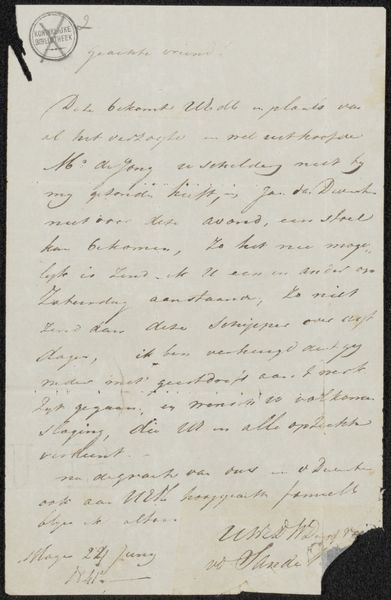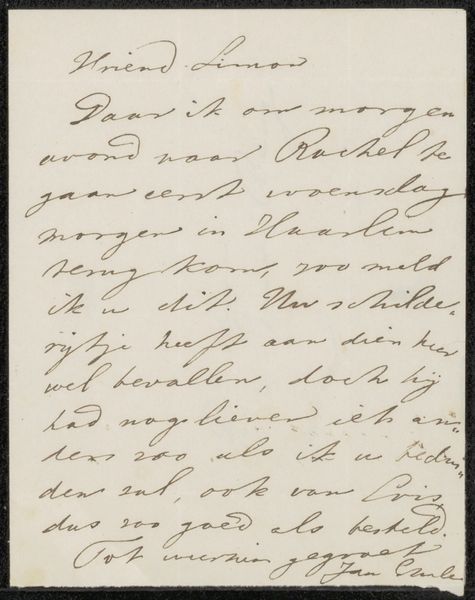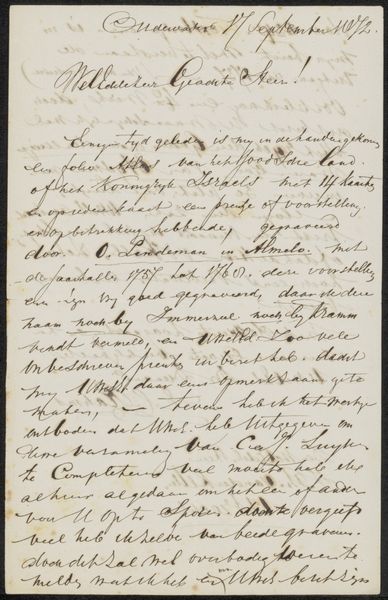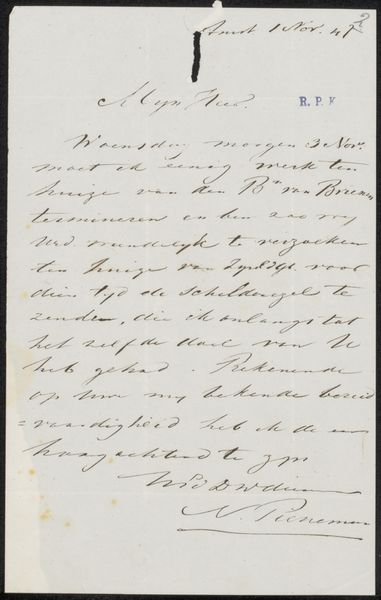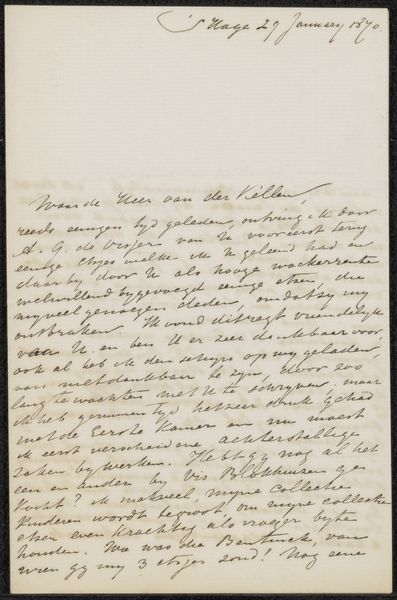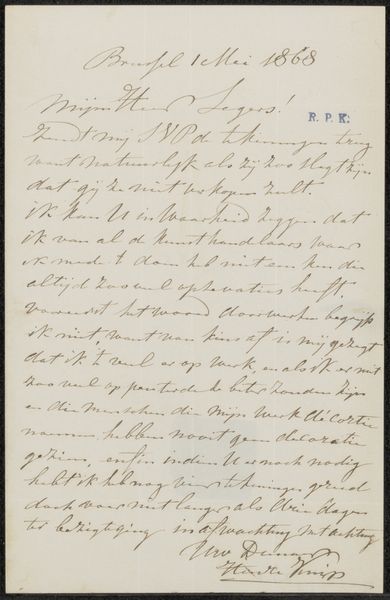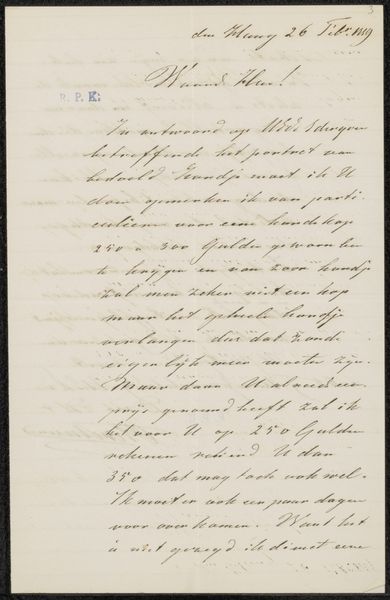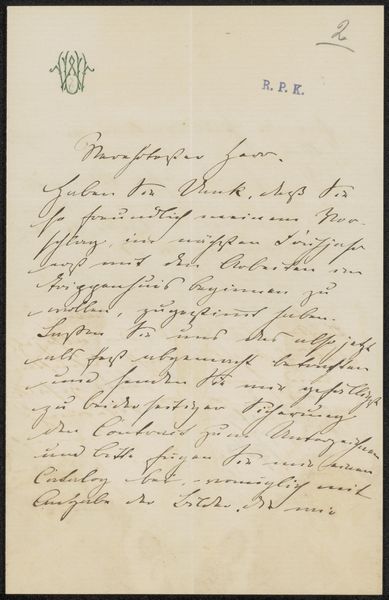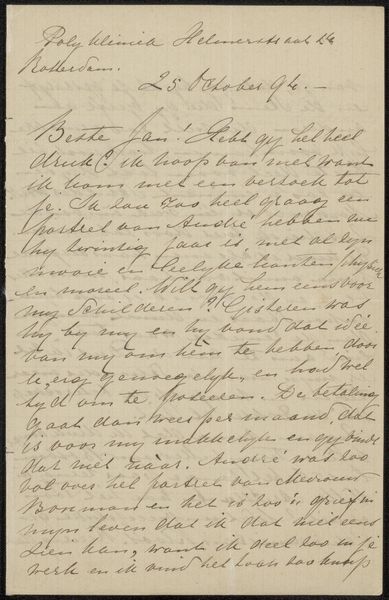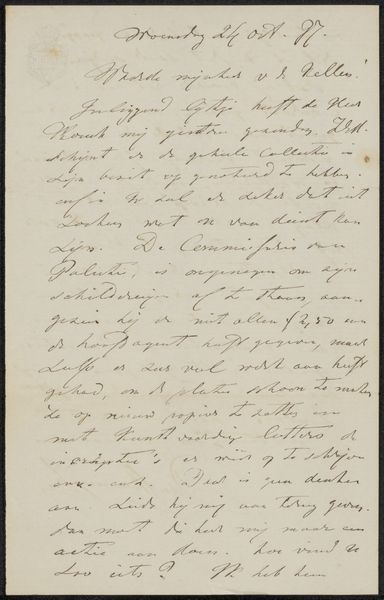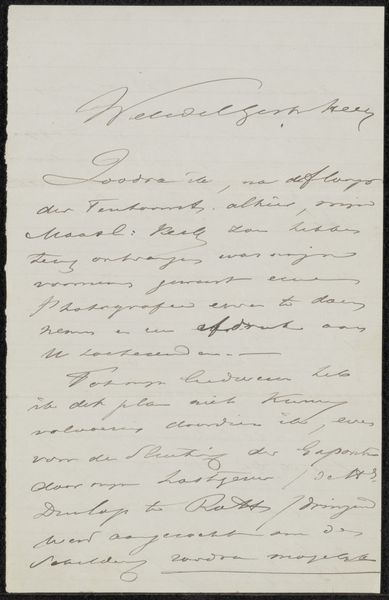
drawing, paper, ink, pen
#
drawing
#
pen sketch
#
hand drawn type
#
paper
#
ink
#
pen work
#
pen
#
calligraphy
Copyright: Rijks Museum: Open Domain
Curator: Robert van Eijsden, a figure perhaps not as widely celebrated as some of his contemporaries, penned this letter around 1871, addressing it to Ary Johannes Lamme. The medium is straightforward: ink on paper, a simple pen drawing, elevated by its beautiful, elegant calligraphy. Editor: My first impression is one of intimacy. It's a personal moment frozen in time, all looping flourishes and delicate pressure, conveying a sense of vulnerability through the deliberate strokes. Curator: Exactly. Think about the materiality— the weight of the paper, the scratch of the nib. Paper wasn't cheap back then, it's not like jotting a grocery list, but also think of the relationship between artist and patron...I find the almost performative aspect of such elaborate penmanship so striking. Editor: Absolutely. The hand and the tool are inextricably linked. Each stroke, each choice reflects the artist's personality and, let’s be honest, skill, and the care invested, but it is also labor. It highlights Van Eijsden's command over a very specific technology: quill and ink. It also demonstrates literacy at a time when writing and reading where less widespread skills, the words being communicated mattered. Curator: Van Eijsden transforms utilitarian script into something that flirts with decoration. In the best examples of calligraphy, you feel not only the message being conveyed but also a real visual experience; a bit like how a singer will inflect pitch to add emotive quality to what is sung. I wonder, does he dwell in each line as it's etched out or does it flow with a rhythm akin to thought itself? I lean toward thinking the process of composing it by hand would offer a slower, and thus more intimate feel. It's meditative, really. Editor: And we, the audience, are complicit. Viewing this letter removes it from its intended context— a private exchange, a moment in a life between two friends becomes material to observe from our modern gaze. Curator: Perhaps. I appreciate it as more than the content or message of communication: a fragment. A piece of somebody else’s mind captured. It’s really quite something, how so much personality can live in simple ink on paper, wouldn't you agree? Editor: Undeniably so. Analyzing it reminds us how physical communication has become digital communication with implications for artistic making and material creation in a rapidly changing present.
Comments
No comments
Be the first to comment and join the conversation on the ultimate creative platform.
